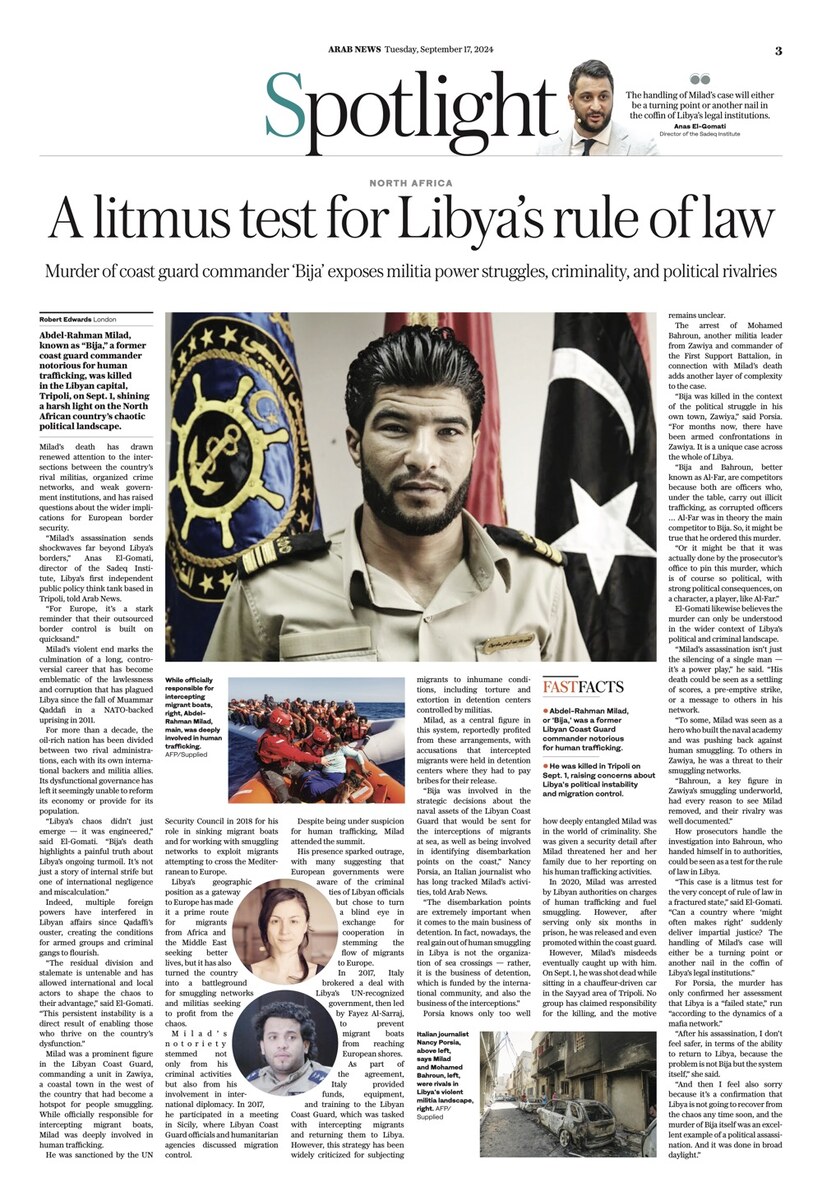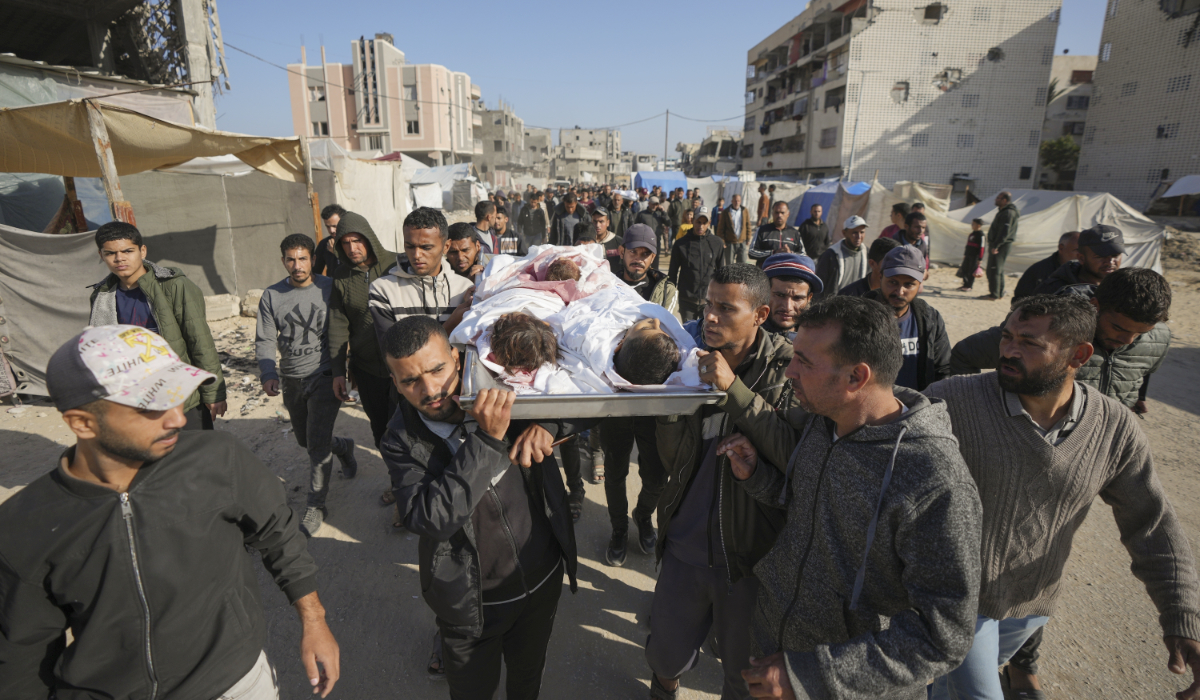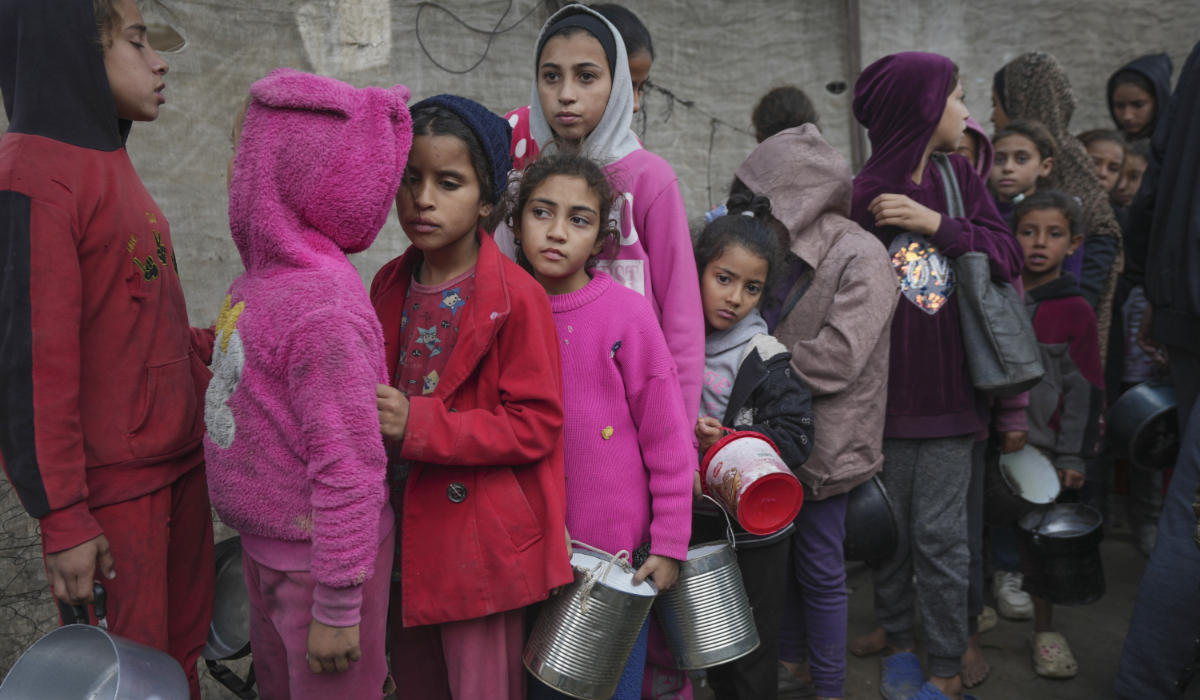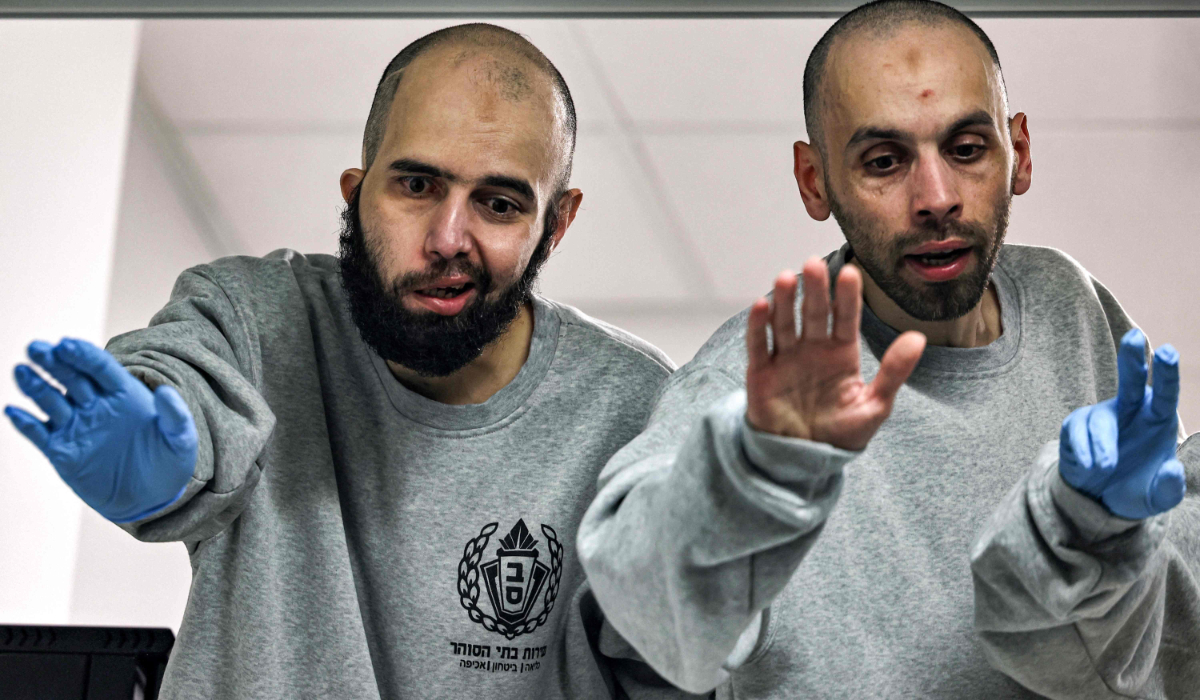LONDON: Abdel-Rahman Milad, known as “Bija,” a former coast guard commander notorious for human trafficking, was killed in the Libyan capital, Tripoli, on Sept. 1, shining a harsh light on the North African country’s chaotic political landscape.
Milad’s death has drawn renewed attention to the intersections between the country’s rival militias, organized crime networks, and weak government institutions, and has raised questions about the wider implications for European border security.
“Milad’s assassination sends shockwaves far beyond Libya’s borders,” Anas El-Gomati, director of the Sadeq Institute, Libya’s first independent public policy think tank and research center based in Tripoli, told Arab News.
“For Europe, it’s a stark reminder that their outsourced border control is built on quicksand.”

Milad’s violent end marks the culmination of a long, controversial career that has become emblematic of the lawlessness and corruption that has plagued Libya since the fall of Muammar Qaddafi in a NATO-backed uprising in 2011.
For more than a decade, the oil-rich nation has been divided between two rival administrations, each with its own international backers and militia allies. Its dysfunctional governance has left it seemingly unable to reform its economy or provide for its population.
This was amply demonstrated in September last year, when devastating floods hit the coastal town of Derna after Storm Daniel caused two dams to collapse, unleashing torrents of water that swept away entire neighborhoods.
The disaster left thousands dead or missing, many of them migrants who had arrived in the town with plans to make the sea crossing to Europe. Political instability hindered rescue efforts, and recovery has been slow due to the fractured state of the country.
“Libya’s chaos didn’t just emerge — it was engineered,” said El-Gomati. “Bija’s death highlights a painful truth about Libya’s ongoing turmoil. It’s not just a story of internal strife but one of international negligence and miscalculation.”
Indeed, multiple foreign powers have interfered in Libyan affairs since Qadaffi’s ouster, creating the conditions for armed groups and criminal gangs to flourish.

“The residual division and stalemate is untenable and has allowed international and local actors to shape the chaos to their advantage,” said El-Gomati. “This persistent instability is a direct result of enabling those who thrive on the country’s dysfunction.”
Milad was a prominent figure in the Libyan Coast Guard, commanding a unit in Zawiya, a coastal town in the west of the country that had become a hotspot for people smuggling. While officially responsible for intercepting migrant boats, Milad was deeply involved in human trafficking.
He was sanctioned by the UN Security Council in 2018 for his role in sinking migrant boats and for working with smuggling networks to exploit migrants attempting to cross the Mediterranean to Europe.
Libya’s geographic position as a gateway to Europe has made it a prime route for migrants from Africa and the Middle East seeking better lives, but it has also turned the country into a battleground for smuggling networks and militias seeking to profit from the chaos.
The EU’s strategy of relying on Libyan forces to control migration flows has been called into question, with many warning that it has done little to address the root causes of migration or the human rights abuses that migrants face in Libya.

“The real question is whether this crisis will force Europe to rethink its approach to migration management in Libya, or if it will continue to rely on an unstable and corrupt system that only perpetuates chaos,” said El-Gomati.
Milad’s notoriety stemmed not only from his criminal activities but also from his involvement in international diplomacy. In 2017, he participated in a meeting in Sicily, where Libyan Coast Guard officials and humanitarian agencies discussed migration control.
Despite being under suspicion for human trafficking, Milad attended the summit, highlighting potential complicity, or at the very least negligence, on the part of Italian authorities.

His presence at this meeting sparked outrage, with many suggesting that European governments were aware of the criminal ties of Libyan officials but chose to turn a blind eye in exchange for cooperation in stemming the flow of migrants to Europe.
The controversy underscored the fraught relationship between European countries, particularly Italy, and Libya over migration. In 2017, Italy brokered a deal with Libya’s UN-recognized government, then led by Fayez Al-Sarraj, to prevent migrant boats from reaching European shores.
As part of the agreement, Italy provided funds, equipment, and training to the Libyan Coast Guard, which was tasked with intercepting migrants and returning them to Libya. However, this strategy has been widely criticized for subjecting migrants to inhumane conditions, including torture and extortion in detention centers controlled by militias.
Rights groups have long condemned the EU’s approach, claiming that by partnering with Libyan authorities, European governments are complicit in the abuses that migrants face once they are returned to Libya.
Opinion
This section contains relevant reference points, placed in (Opinion field)
Milad, as a central figure in this system, reportedly profited from these arrangements, with accusations that intercepted migrants were held in detention centers where they had to pay bribes for their release.
“Bija was involved in the strategic decisions about the naval assets of the Libyan Coast Guard that would be sent for the interceptions of migrants at sea, as well as being involved in identifying disembarkation points on the coast,” Nancy Porsia, an Italian journalist who has long tracked Milad’s activities, told Arab News.
“The disembarkation points are extremely important when it comes to the main business of detention. In fact, nowadays, the real gain out of human smuggling in Libya is not the organization of sea crossings — rather, it is the business of detention, which is funded by the international community, and also the business of the interceptions.”

Porsia knows only too well how deeply entangled Milad was in the world of criminality. She was given a security detail after Milad threatened her and her family due to her reporting on his human trafficking activities.
Milad’s crimes were not limited to human trafficking, however. He was also reportedly involved in fuel smuggling, using his position in the coast guard to control illicit trade routes in western Libya.
These criminal operations likely helped fuel the wider conflict in Libya, where rival factions and militias have vied for control of resources and territory.
Milad’s close connections with various militias in Zawiya allowed him to operate with impunity for years, despite being the subject of multiple international sanctions.
In 2020, Milad was arrested by Libyan authorities on charges of human trafficking and fuel smuggling. However, after serving only six months in prison, he was released and even promoted within the coast guard.
FASTFACTS
• Abdel-Rahman Milad, or ‘Bija,’ was a former Libyan Coast Guard commander notorious for human trafficking.
• He was killed in Tripoli on Sept. 1, raising concerns about Libya’s political instability and migration control.
His release sparked outrage, with many questioning the Libyan government’s commitment to tackling human trafficking. Milad’s ability to move freely in western Libya despite his criminal background further highlighted the weak rule of law and the power wielded by the militias.
However, Milad’s misdeeds eventually caught up with him. On Sept. 1, he was shot dead while sitting in a chauffeur-driven car in the Sayyad area of Tripoli.
His death was met with mixed reactions. Some Libyan officials, including militia leader Moammar Dhawi and Abdullah Allafi, deputy head of the Presidential Council, have expressed condolences and called for an investigation.
No group has claimed responsibility for the killing, and the motive remains unclear.
Some speculate that his killing could be linked to infighting among Libyan militias or to his potential threats to reveal incriminating information about the dealings between the Libyan Coast Guard and human smuggling networks.

The arrest of Mohamed Bahroun, another militia leader from Zawiya and commander of the First Support Battalion, in connection with Milad’s death adds another layer of complexity to the case, suggesting that the killing may have been the result of a power struggle.
“Bija was killed in the context of the political struggle in his own town, Zawiya,” said Porsia. “For months now, there have been armed confrontations in Zawiya. It is a unique case across the whole of Libya.
“Bija and Bahroun, better known as Al-Far, are competitors because both are officers who, under the table, carry out illicit trafficking, as corrupted officers … Al-Far was in theory the main competitor to Bija. So, it might be true that he ordered this murder.
“Or it might be that it was actually done by the prosecutor’s office to pin this murder, which is of course so political, with strong political consequences, on a character, a player, like Al-Far.”
El-Gomati likewise believes the murder can only be understood in the wider context of Libya’s political and criminal landscape.
“Milad’s assassination isn’t just the silencing of a single man — it’s a power play,” he said. “His death could be seen as a settling of scores, a pre-emptive strike, or a message to others in his network.
“To some, Milad was seen as a hero who built the naval academy and was pushing back against human smuggling. To others in Zawiya, he was a threat to their smuggling networks.
“Bahroun, a key figure in Zawiya’s smuggling underworld, had every reason to see Milad removed, and their rivalry was well documented.

“If he was indeed disrupting Bahroun’s operations, his death could realign the balance of power in Zawiya, giving rival smuggling factions room to expand. The murder sent a message — those who challenge the status quo don’t survive.”
He added: “Bahroun’s arrest might cause a temporary disruption in human trafficking routes, but history shows that new players will quickly fill the void.”
How prosecutors handle the investigation into Bahroun, who handed himself in to authorities voluntarily, could be seen as a test for the rule of law in Libya — determining where power really lies in the troubled country.
“This case is a litmus test for the very concept of rule of law in a fractured state,” said El-Gomati. “Can a country where ‘might often makes right’ suddenly deliver impartial justice? The handling of Milad’s case will either be a turning point or another nail in the coffin of Libya’s legal institutions.”
Milad’s death is a symptom of the larger problems facing Libya. Since Qaddafi’s fall, the country has been divided between rival governments, with the UN-backed administration in the west and the government of military strongman Field Marshal Khalifa Haftar in the east.
“The reality is that the strongest armed groups and figures like Haftar, who escape accountability despite waging war and assassinations, underscore the deep flaws in Libya’s justice system,” said El-Gomati.
“Tripoli’s actions will reveal whether it can enforce true justice this time or merely manage a facade.”

For El-Gomati, the old model of engagement with Libya by foreign powers, including the UN, the EU, Russia, Turkiye, and others, has to change.
“For Libya to break free from this cycle, there needs to be a fundamental shift in how the international community engages,” he said.
“It requires more than just selective sanctions and recycled initiatives. It demands a rethinking of the UN’s roadmap to elections and a commitment to holding all players accountable for their role in its disruption. It needs real consequences for those who exploit the country’s misery.
“Until the rules of the game change, Libya will remain a playground for the powerful and a prison for its people.”
For Porsia, who herself became part of the Milad story after his threats to kill her and her family, the murder has only confirmed her grim assessment that Libya is a “failed state,” run “according to the dynamics of a mafia network.
“After his assassination, I don’t feel safer, in terms of the ability to return to Libya, because the problem is not Bija but the system itself,” she said.
“And then I feel also sorry because it’s a confirmation that Libya is not going to recover from the chaos any time soon, and the murder of Bija itself was an excellent example of a political assassination. And it was done in broad daylight.”































